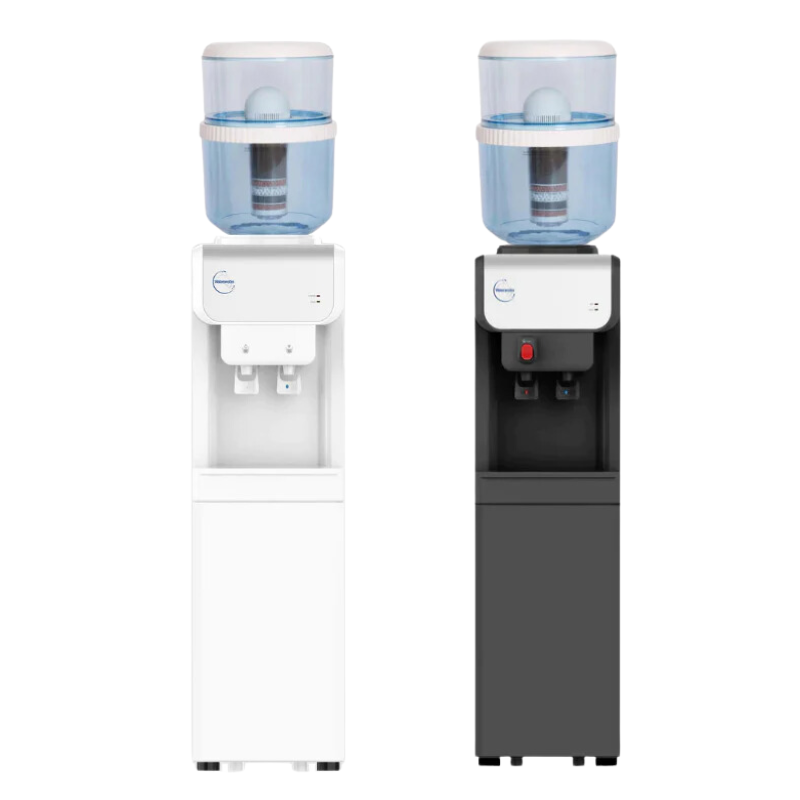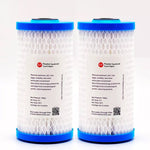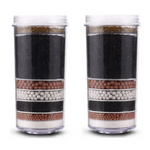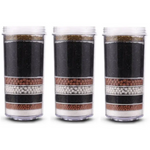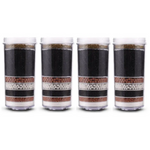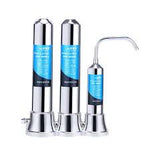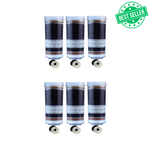You have no items in your shopping cart.
To say that water is necessary for optimal health is an understatement. Water is life, and this is something we should remember. However, the same thing needed for our survival has become tainted with various harmful substances. The most hazardous and contentious is fluoride. Since the 1940s, the government has pumped massive amounts into our drinking water supply, claiming that it is good for our dental health. But studies show otherwise. Excessive consumption of fluoride can lead to serious health risks. Read on to know more about the water filters that remove fluoride effectively.
WATER FLUORIDATION
The technique of putting fluoride into the drinking water is known as fluoridation. It has been a widespread practice since the 1940s and is currently one of the most contentious issues. Fluoridation proponents argue that putting the substance into the water supply reduces cavities, while critics point to evidence that shows fluoride is dangerous.
However, even though it is excellent for our teeth and enamel color, it is still the cause of many serious problems and diseases, according to the debate. Water is used in practically every food we consume, not just for drinking. Fluoride pollution in water contaminates almost everything we consume.
Fluoridation is a procedure that adds fluoride to water in several Australian cities. The states that do so are listed below.
- Tasmania
- Australian Capital Territory
- New South Wales
- South Australia
- Western Australia
- Queensland
- Northern Territory
- Victoria

WHY YOU MUST FILTER FLUORIDE
Fluoride has many consequences in our bodies that make it highly dangerous to eat, even in little amounts over time. There are several reasons why w must filter fluoride from our drinking water right away:
Possible Damage in the Brain and Nervous System
The chemical shows to lower IQ in youngsters and to decrease focus and attention in adults. It destroys the brain's nerves as well as the vertebral column and spinal cord's strength.

No Consumption Limit
The public water supply adds fluoride to the water to help us avoid dental problems. However, only a small portion of it contributes to this. However, the volume of water in our supply is 100s of times greater than the recommended level. Fluoride ingestion through the water is not dose-controlled. So, if you drink 8 to 10 cups of water every day, you're also ingesting 8 to 10 cups of Fluoride pollution, which is equally harmful to your health.
Skeletal and Dental Fluorosis
The fluoride we keep in our bodies is absorbed 99 percent by our teeth and bones. Increased fluoride consumption over a lifetime can result in joint stiffness and joint paint (skeletal fluorosis), and dental fluorosis.

Fluoride Intoxication
Fluoride poisoning happens by consuming large amounts of soluble fluoride salts over an extended period. In the past, the majority of cases occurs when unintended ingestion of insecticides containing sodium fluoride. Fluoride poisoning is currently most commonly caused by the use of dental fluoride products.
People's lethal elemental fluoride dose per kilogram of body weight is 32 to 64 mg essential fluoride.
Possible Health Concerns
Fluoride produces rigidity in bones and enhances their brittleness, making them more susceptible to fractures. People exposed to that much fluoride are more likely to develop thyroid diseases and gland abnormalities. The debate is whether this occurs just if somebody consumed high fluoride levels. But there's no way of knowing how much is too much for any given person.
WATER FILTERS THAT REMOVE FLUORIDE
You can find water filters in different shapes and sizes, and they're also rather inexpensive. However, the problem is determining which filter is best for your specific requirements. But one thing is universal: removing fluoride from all water requirements, or at the very least decreasing it to the bare minimum of intake. Commercially available fluoride removal water filters up to 95 percent of fluoride, leaving only the quantity required for our teeth and oral health. They do not impair our health in any other way.
Reverse Osmosis
Reverse osmosis is the most effective way to filter fluoride from drinking water. By its nature, any good reverse osmosis machine removes roughly 95% of fluoride. There are no extra filters or setup requirements.
Whole House Water Filters
Whole-house filtration systems deliver safe drinking water, particularly from wells with high metal and organic matter levels. Fluoride is in the same ppm range as fluoride, and whole-house filters successfully remove it from the water, making it safe to drink. With up to eight cartridge modes, whole house filters perform faster and can handle heavier loads.
De-Ionization Water Filters
Deionization is comparable to distillation in that it takes the same amount of time to complete. It removes all ionic particles and fluoride from water. However, these filters are costly, and they necessitate frequent cartridge replacements as well as extensive maintenance. Non-ionic water pollutants are still untreated.
Activated Alumina Water Filters

Many filters have activated charcoal cartridges that work differently than Reverse Osmosis. The filters' activated alumina granules absorb all pollutants and deliver drinking water up to 97 percent clean. The drawback of these purifiers is that they require a specific pH value (less than 8.5) to function properly.
Countertop Fluoride Water Filter
Countertop water filters are mounted on your kitchen counter and connected to your kitchen faucet by a flexible tube, as the name implies. When you turn on the kitchen tap, water travels through the tube into the filter media, where it passes through one or more filter media.
A countertop fluoride filter often contains a bone char activated carbon filter. Fluoride ions are exchanged for hydroxide ions in this filter, resulting in a significant reduction in fluoride levels in the water. Once the water passes through the filter, it will come out of the dispenser or faucet attached to the unit.
PROS AND CONS OF FLUORIDE IN WATER
Pros
- Fluoride shields teeth from decay by building a bond with them that allows them to acquire a resistance to bacteria's acid.
- Medical and dental groups from all over the world have approved water fluoridation. Experts consider it to be a safe and effective treatment of protecting teeth and reducing cavities.
- According to scientists, water fluoridation is one of the twentieth century's top ten most important public health policies.
- According to studies, a balanced level of fluoride in water prevents tooth decay by about 25% throughout a lifetime.
- Water fluoridation is affordable on an individual and social level.
- The children who've been drinking fluoridated water since birth have stronger teeth in maturity, according to studies.
Cons
- Fluoride in domestic water has been related to negative health impacts in studies, even at low levels. Thyroid problems, fractured bones, and brain development problems are just a few examples.
- Fluoride is also better when used topically rather than eating, according to studies.
- Dental fluorosis happens when there's too much fluoride in the water supply. White spots and brown stains on teeth are something we've all seen. Pits and cracks in tooth enamel are also possible.
FINAL THOUGHTS: Water Filters That Remove Fluoride
By just utilizing a fluoride-free water filter, you're deciding that it could save your life. At the very least, it will assist you in avoiding major fluoride-related health problems.
Instead of letting fluoride wreak havoc on your bones, brain, and organs with every glass of water, you consume. You'll be able to drink water, which will help to nourish your body and keep you healthy.

